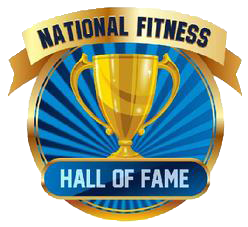July 22, 2022
Motivation vs. Discipline
Motivation vs. Discipline
People seem to use these two words interchangeably. We know that both motivation and discipline hold the keys to achieving something we want, but is there a difference between the two? Absolutely.
Let us get the actual definitions clear, so we know what we are talking about.
Discipline: (verb) train oneself to do something in a controlled and habitual way.
Motivation: (noun) a reason or reasons for acting or behaving in a particular way, or the desire or willingness to do something; enthusiasm.
The Difference Between the Two
Motivation is a great kick-starter when it comes to inspiring you to make a change in your life.
That rush of newly found energy and enthusiasm will make the laziest person get off their butt and do something. There’s just one problem. Motivation is often short-lived.
It will get you going to the gym on the 1st of January, but it most likely won't keep you going until August. We are so used to instant gratification that not achieving a goal fast enough will kill most of our motivation.
On the other hand, discipline is much harder to cultivate than motivation.
Discipline is boring, you don't get a dopamine hit, and it's not as romanticized as its short-lived brother. It has to be built with a lot of effort. And while it won't get you to the gym on the first day of the year, it will keep you coming back in the future.
It would be great if we could rely on motivation for accomplishing anything in life, but life would be too easy that way, right?
Bridging The Gap
Motivation is awesome; it exists with a purpose. It forces us to act, steer toward our goals, and feel like we're in control. Motivation is necessary, but so is discipline. Being that it's basically motivations' boring cousin, people don't talk about it as much.
While motivation will fade after some time, discipline will continue to grow. While motivation describes an event, discipline describes a lifestyle.
Achieving anything worthwhile takes a lot of time. The only way to actually achieve it is by staying consistent and diligent. Discipline is precisely that. The small and large tasks you do daily, the productive habits you form, everything you do on this road to success.
It’s just like sculpting a beautiful statue. You need to chisel the block of marble a thousand times before it starts becoming the statue that hides underneath. Motivation will get you to start carving out something beautiful, but discipline will keep you going.
Willpower and Habit-Forming
Since discipline depends almost entirely on habit-forming and willpower, it's crucial to know how they work.
In this context, willpower is basically the ability to resist short-term temptations and urges in order to achieve your long-term goals.
Dr. Roy Baumeister found out that our willpower can be depleted. His theory says that tasks that make us use our ability to resist urges and/or get things done when we don't want to do them fatigue our "willpower muscle" and make it harder to use it again after that.
Thankfully, willpower can be exercised by regularly using it with diligence.
Habit-forming has been studied for a while now, and there are many books you can pick up to learn about it. “Atomic Habits” and “The Power of Habit” are the first ones that come to mind.
The topic of habit-forming is way too complex to be explained in this short article, but the books mentioned above, along with James Clear’s blog, are a great way to get started.
Conclusion
We need the motivation to get going, and we need the discipline to get there.
Start by cutting your grand goal into bite-sized goals. That way, you can get a bit of motivation after every small win you gather and fortify your discipline.
Try to never skip the habit you want to form. For example, if your goal is to read every day, on that one day that you don't get the time to read 10 or 20 pages, read at least one. It will keep your streak going, which matters the most.
Continually rethink your goals and your planned process of getting there.
Being disciplined isn't fancy. It's a long and troublesome road, but the journey is well worth it.





